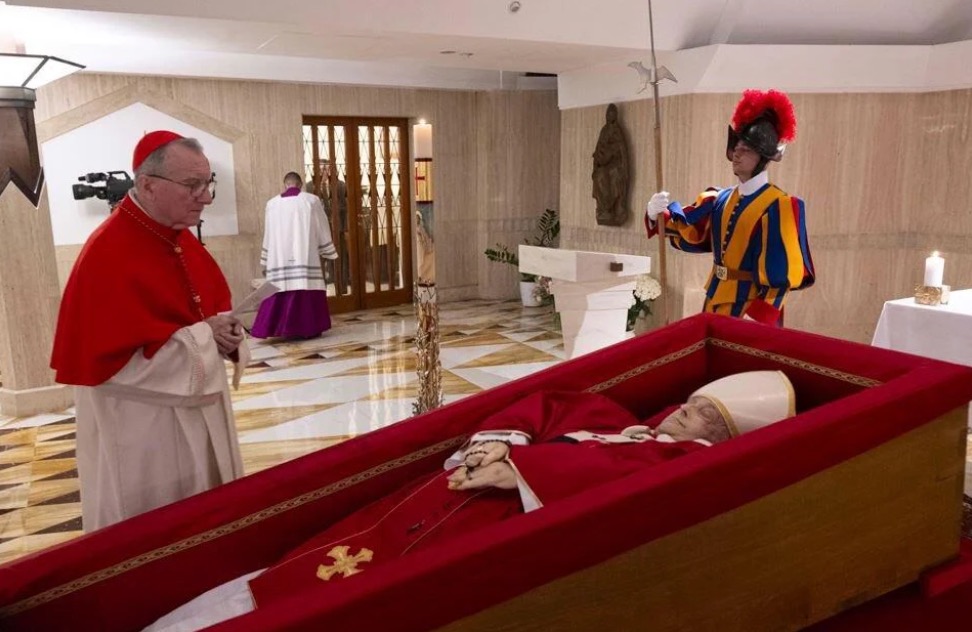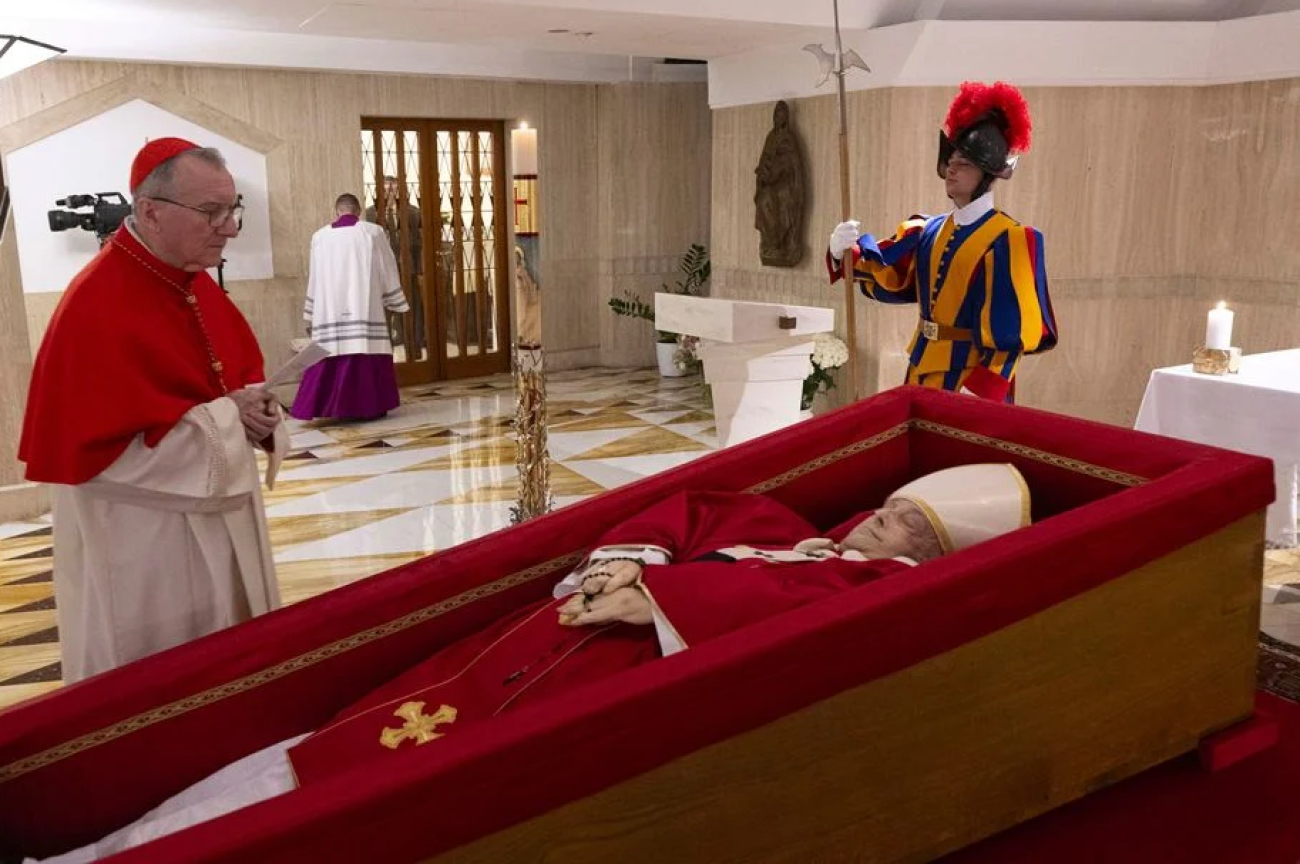The world mourns the passing of Pope Francis, the 88-year-old pontiff whose death has left a profound mark on the Catholic Church and the millions of lives he touched. His death on April 21, 2025, following a stroke and complications from pneumonia, has led to an outpouring of grief from around the globe. The loss is not only a personal one for his family and the Church but also a spiritual one for those who followed his mission of humility, compassion, and service to the poor and marginalized.
As the faithful bid their final goodbyes, one element of his passing that stands out is the simplicity and thoughtfulness of the items placed with him in his casket. These items, much like the pope’s life, carry deep significance and reflect his values—values he carried into every aspect of his papacy. The careful selection of objects, the decision on where he would be buried, and the humble nature of the funeral arrangements highlight the very essence of Pope Francis’ life: devotion to the Church and to the teachings of Jesus, a commitment to simplicity, and an unyielding dedication to humility.

Handout/Vatican News service
The Items Inside the Pope’s Casket
In a remarkable departure from papal tradition, Pope Francis’ final resting place contains items that reflect both his personal devotion and the legacy he leaves behind. The Vatican released the first images of his casket, revealing details that spoke volumes about the man who led the Catholic Church through some of its most turbulent times.
The casket, standing before the solemn watch of ceremonial guards, is simple—just as Pope Francis had requested. Instead of the customary ornate burial arrangements, which have been traditional for past popes, the pontiff chose a modest wooden casket. Lined with zinc and stripped of any excessive adornment, this choice in itself was a statement of his commitment to living a humble life, despite the high office he held.
Inside the casket, several items are placed, each holding symbolic importance. Pope Francis is dressed in his red papal vestments, a color traditionally associated with martyrdom and the blood of Christ, signifying his own sacrifice for the Church. In his hands, a rosary is gently folded, a constant companion throughout his life. The rosary, one of the most recognizable symbols of Catholic faith, represents both his personal devotion to prayer and his role as a shepherd of the faithful.

Handout/Vatican News service
Other items placed in the casket include the mitre, the traditional papal hat, and the crozier, a symbol of the pope’s pastoral role. These items have been carried by popes for centuries, representing the authority and responsibilities bestowed upon them by the Church. Alongside these, a collection of coins minted during Pope Francis’ papacy has been placed in the casket. These coins, a centuries-old tradition, represent the pope’s tenure as the Vicar of Christ, marking his time as the leader of the Catholic Church.
Perhaps the most poignant item in the casket is the broken Fisherman’s Ring. This ring, a powerful symbol of papal authority, is ceremonially destroyed before the pope’s burial. It signifies the end of the pope’s reign and ensures that the ring cannot be misused after his death, as it was originally designed to seal the pope’s personal letters.
In addition to these items, there is a rogito, a sealed legal document that summarizes the life and pontificate of Pope Francis. This document is traditionally placed inside the casket, a historical custom that reflects the pope’s personal achievements and the milestones of his papacy.
A Break from Tradition: Simplicity and Humility
Pope Francis’ death marks a significant departure from the long-standing papal traditions that have defined the Church for centuries. Traditionally, popes have been buried in elaborate triple coffins made of cypress, lead, and oak. These ornate coffins reflect the high status of the pope within the Church and the world. However, Pope Francis chose to forgo this grand tradition in favor of simplicity, reflecting the very essence of his teachings and the example he set throughout his papacy.
His choice of a modest wooden coffin, with a simple zinc lining, speaks volumes about the values he held dear. Pope Francis was known for his humility, often choosing to live in simplicity rather than in the grandeur that comes with the papacy. This final decision on how he wished to be laid to rest was a testament to the consistent message of his life—a message that emphasized service, humility, and care for the poor and marginalized.
Furthermore, Pope Francis’ funeral arrangements were also nontraditional. Instead of being placed on a raised bier inside St. Peter’s Basilica for public mourning, his coffin is placed at floor level. The coffin, facing the pews, will allow mourners to approach in a more intimate manner, providing a personal space for them to reflect and pray. The Paschal candle, a symbol of Christ’s resurrection, will be placed close to the coffin, further highlighting the spiritual significance of this moment.
A Personal Burial Location: Basilica of Santa Maria Maggiore
Another notable departure from tradition is Pope Francis’ final resting place. Unlike his predecessors, who have been laid to rest in the grottoes beneath St. Peter’s Basilica, Pope Francis chose to be buried at the Basilica of Santa Maria Maggiore in Rome’s Esquilino neighborhood. This decision is particularly significant, as it reflects Pope Francis’ deep personal connection to the basilica. Throughout his papacy, he frequently visited the basilica to pray and reflect, and he had expressed his desire to be laid to rest there.
The Basilica of Santa Maria Maggiore is one of Rome’s four major basilicas and is steeped in history and tradition. Pope Francis’ choice to be buried here, rather than in the traditional papal burial grounds, underscores his desire for simplicity and a more intimate connection with the faithful. The basilica’s location in the heart of Rome, far from the grandiosity of St. Peter’s Basilica, aligns with the Pope’s lifelong commitment to serving the people rather than elevating himself above them.
Pope Francis’ Funeral and Final Farewell
The official funeral for Pope Francis will take place on Saturday, April 26, 2025, at 10 AM local time in St. Peter’s Square. Following the public ceremony, his body will be transported to the Basilica of Santa Maria Maggiore for burial. Starting Wednesday, April 23, Pope Francis’ body will lie in state in St. Peter’s Basilica, allowing the faithful to pay their respects.
As the body enters St. Peter’s Basilica, the Litany of Saints will fill the air, led by Cardinal Kevin Joseph Farrell, who currently serves as the camerlengo. For the first time in over a century, the Pope will not be placed on an elevated bier, but his simple wooden coffin will rest at floor level. This change reflects the humility that defined Pope Francis’ life.
A Legacy of Humility, Compassion, and Service
Pope Francis’ death represents the end of an era in the Catholic Church. His papacy was marked by a focus on social justice, interfaith dialogue, and environmental stewardship. His emphasis on humility, service to others, and a deep commitment to the marginalized shaped the course of his leadership.
As the world continues to mourn his loss, the items placed in his casket serve as a final reminder of the values he championed. His decision to break with tradition in both his burial arrangements and the items he chose to accompany him underscores the lasting impact of his leadership. Pope Francis was not a man of wealth and power, but a man of simplicity and compassion, dedicated to the service of others.
In death, as in life, Pope Francis has left an indelible mark on the Church and the world. His final resting place and the items chosen to accompany him speak not just to his role as Pope, but to his enduring legacy as a man who lived his life in service of the Lord and the faithful.
As the faithful gather to pay their respects and say their final goodbyes, Pope Francis’ legacy will continue to inspire and guide the Church for generations to come. In simplicity, humility, and love, Pope Francis has left a model of leadership for all to follow.

